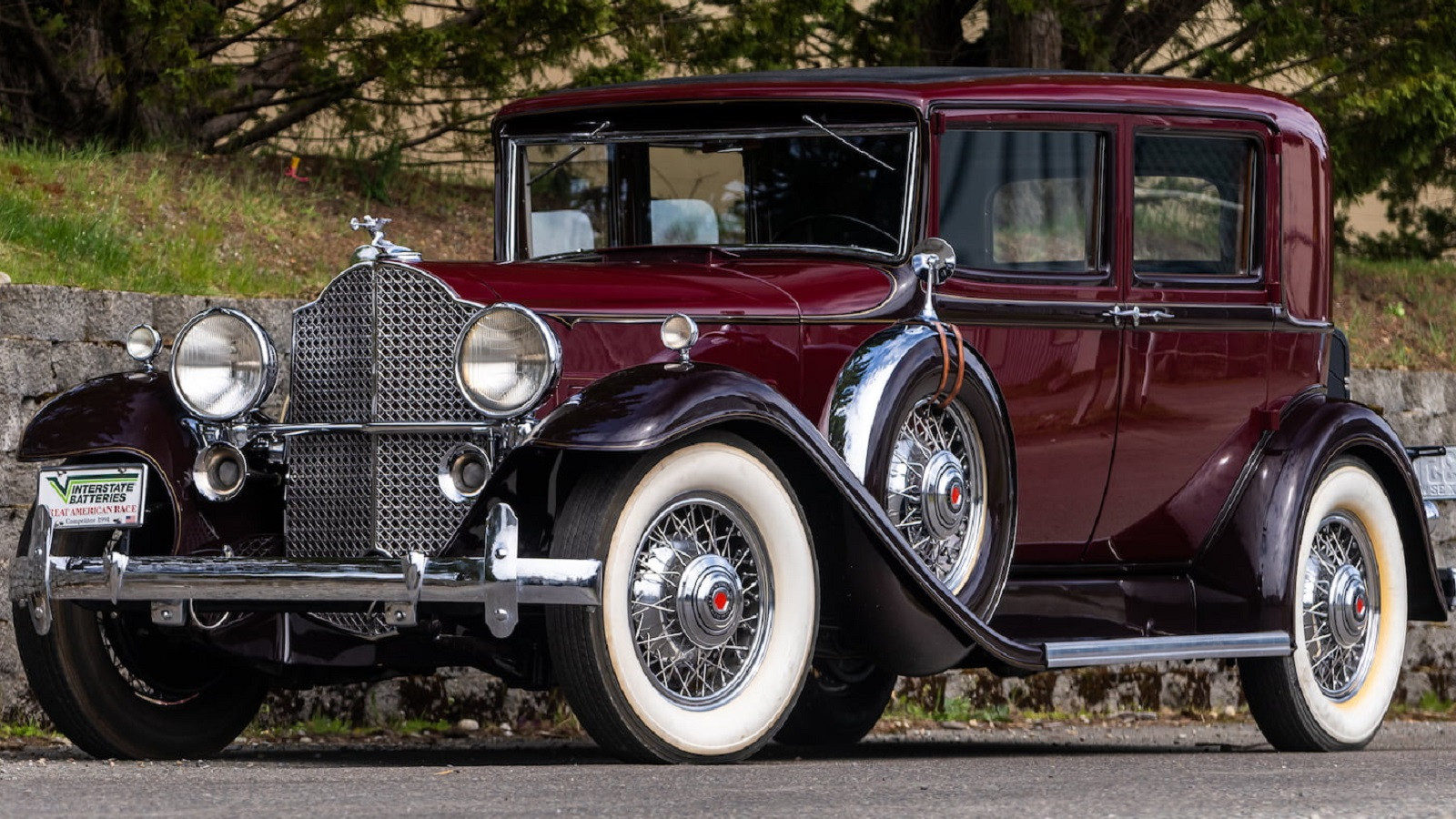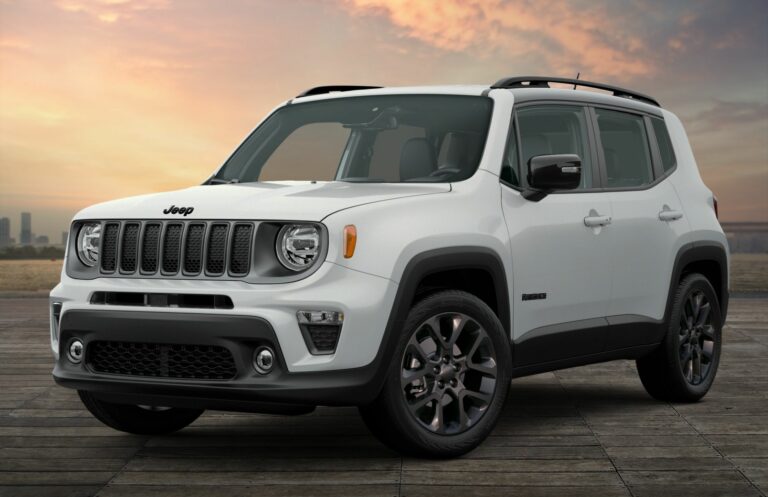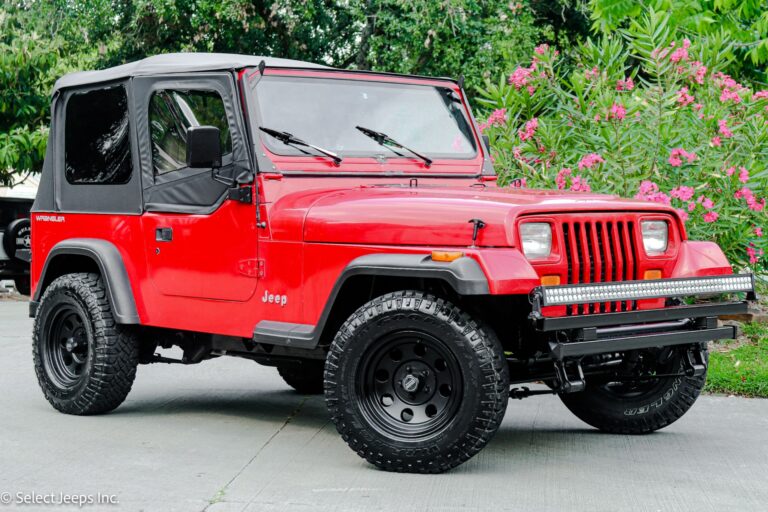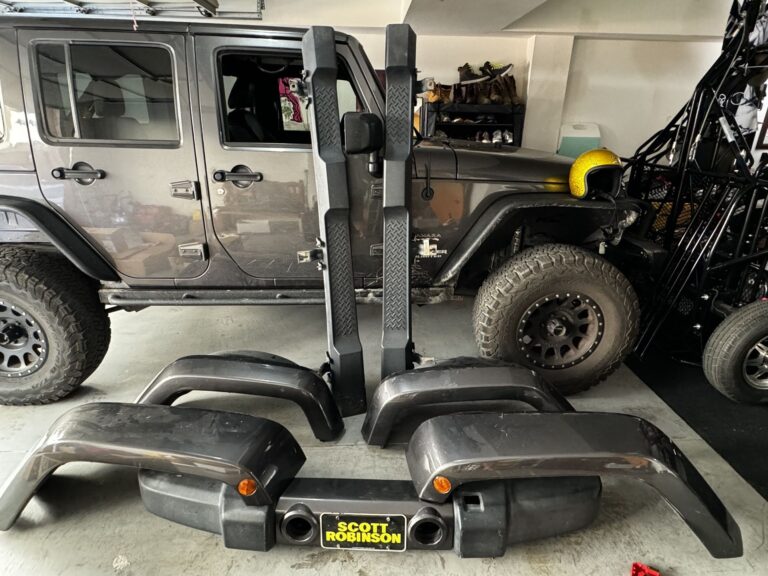Classic Jeep CJ For Sale: Your Definitive Guide to Owning an Icon
Classic Jeep CJ For Sale: Your Definitive Guide to Owning an Icon jeeps.truckstrend.com
The rumble of a rugged engine, the scent of the open air, and the unmistakable silhouette of an automotive legend – for many, the Classic Jeep CJ isn’t just a vehicle; it’s a statement, a lifestyle, and a portal to adventure. Standing for "Civilian Jeep," the CJ series, produced from 1945 to 1986, is the direct descendant of the military Willys MB, a vehicle that helped win World War II. Its enduring appeal lies in its no-nonsense utility, unparalleled off-road prowess, and a timeless design that continues to captivate enthusiasts worldwide.
If you’re dreaming of owning a piece of American automotive history, navigating the world of "Classic Jeep CJ for sale" can be both exhilarating and daunting. This comprehensive guide will equip you with the knowledge, tips, and insights needed to make an informed purchase, ensuring your journey into CJ ownership is as smooth and rewarding as the open road ahead.
Classic Jeep CJ For Sale: Your Definitive Guide to Owning an Icon
The Enduring Legacy of the Jeep CJ
To truly appreciate a classic CJ, it helps to understand its lineage. Each iteration brought subtle changes while retaining the core spirit of its predecessors:
- CJ-2A (1945-1949): The First Civilian Jeep. Post-war demand for a versatile utility vehicle led to the CJ-2A. Known for its flat-fender design, robust construction, and "Go-Devil" engine, it laid the groundwork for all CJs to follow.
- CJ-3A (1949-1953) & CJ-3B (1953-1968): Evolution of Utility. The 3A offered minor refinements, while the 3B introduced a taller hood to accommodate the F-head engine, earning it the nickname "high-hood."
- CJ-5 (1955-1983): The Long-Running Classic. Inspired by the Korean War M38A1, the CJ-5 featured a rounder body and was produced for nearly three decades. It saw numerous engine and transmission changes, becoming a beloved workhorse and recreational vehicle.
- CJ-6 (1955-1981): The Stretched Variant. Essentially a longer wheelbase CJ-5, the CJ-6 offered more cargo space or seating, making it popular for expeditions and family use.
- CJ-7 (1976-1986): The Modernized Icon. With a slightly longer wheelbase than the CJ-5, the CJ-7 offered improved stability and allowed for an automatic transmission option. Its more conventional door openings and optional steel doors made it more comfortable for daily driving, cementing its status as arguably the most popular and sought-after CJ model today.
- CJ-8 Scrambler (1981-1986): The Pickup Truck Variant. Based on the CJ-7 chassis but with an extended rear, the Scrambler was a unique and relatively rare pickup-style CJ, highly prized by collectors.

The enduring spirit of the CJ lies in its simplicity, modular design, and the "go-anywhere" capability that defines the Jeep brand. Owning one isn’t just about driving; it’s about connecting with a rich history of adventure and utility.
Why Buy a Classic Jeep CJ?
The allure of a classic CJ extends far beyond its historical significance. For many, it offers a unique ownership experience:
- Nostalgia and Icon Status: Owning a CJ is owning a piece of Americana. It evokes a sense of freedom, ruggedness, and a bygone era of straightforward engineering.
- Simplicity and Maintainability: Unlike modern vehicles laden with complex electronics, CJs are relatively simple machines. This makes them easier and often cheaper to maintain and repair for the average DIY enthusiast. Parts are also incredibly abundant.
- Off-Road Prowess: From rocky trails to muddy paths, CJs were designed for challenging terrain. Their short wheelbases, high ground clearance, and robust 4×4 systems make them formidable off-road machines, even by today’s standards.
- Customization Potential: A CJ is a blank canvas. Whether you want to restore it to original glory, lift it for extreme off-roading, or create a unique street cruiser, the aftermarket support is immense, allowing for endless personalization.
- Investment Potential: While not a guaranteed appreciating asset, well-maintained, original, or professionally restored CJs have held their value remarkably well and, in some cases, have seen significant appreciation, particularly for rarer models like the Scrambler.
- Community: The Classic Jeep community is vast, passionate, and welcoming. From online forums to local clubs and national events, you’ll find a supportive network of fellow enthusiasts eager to share knowledge, tips, and trail adventures.
What to Look For When Buying a Classic Jeep CJ
Purchasing a classic vehicle requires diligence. Here’s a detailed checklist of critical areas to inspect:
- Rust, Rust, Rust: This is the #1 enemy of CJs.
- Frame: Inspect the entire frame for cracks, excessive pitting, and rot, especially around spring hangers, skid plates, and body mounts.
- Body Tub: Check the floorboards (driver and passenger), rocker panels, wheel wells, and behind the seats. The "smurf hat" (area around the transmission tunnel) is a common rust spot.
- Fenders and Hood: Look for bubbling paint, particularly around the edges and mounting points.
- Windshield Frame: Often rusts from the inside out, check the bottom edge.
- Engine Condition:
- Leaks: Look for oil, coolant, or power steering fluid leaks. Minor seepage might be acceptable, but active drips indicate problems.
- Smoke: Blue smoke from the exhaust indicates burning oil; white smoke suggests coolant issues.
- Noises: Listen for knocking, ticking, or grinding sounds.
- Compression: A compression test can reveal internal engine wear.
- Originality vs. Swaps: Decide if you want an original engine (like the AMC 258 or 304/360 V8) or a modern engine swap.
- Drivetrain:
- Transmission: Test all gears, including reverse. Listen for grinding or difficulty shifting. For automatics, check for smooth engagement and no slipping.
- Transfer Case: Engage 4-high and 4-low. Ensure it shifts smoothly and the 4×4 system engages properly. Check for leaks.
- Axles: Check differential covers for leaks. Listen for humming or clunking noises, which can indicate worn gears or bearings.
- Suspension & Steering:
- Leaf Springs: Check for broken leaves, sagging, or excessive arch.
- Bushings: Worn bushings in leaf springs, control arms (if modified), or sway bars can cause clunking and poor handling.
- Shocks: Look for leaks or excessive bounce.
- Steering: Check for excessive play in the steering wheel. Inspect tie rods, drag link, and ball joints for looseness.
- Electrical System: Often a neglected area. Test all lights (headlights, tail lights, turn signals, brake lights), gauges, horn, and wipers. Look for frayed wires or amateur wiring jobs.
- Brakes: Check the master cylinder for leaks. Inspect brake lines for rust or damage. Test the pedal for firmness; a spongy pedal indicates air or a leak.
- Documentation: Request service records, receipts for major repairs or upgrades, and a clear title. A detailed history adds significant value.
- Originality vs. Modified: Be clear about your preference. A highly original, unmolested CJ will command a higher price, while a modified one might offer performance upgrades but could hide underlying issues.
Where to Find Your Classic CJ
- Online Marketplaces: Websites like Craigslist, Facebook Marketplace, eBay Motors, and dedicated classic car sites (e.g., Hemmings, ClassicCars.com) are excellent starting points.
- Specialized Forums & Clubs: Jeep forums (e.g., JeepForum.com, CJ-8.com) and classic Jeep clubs often have "for sale" sections where enthusiasts sell their vehicles. This community often provides more detailed descriptions and history.
- Classic Car Dealerships: Some dealerships specialize in classic vehicles and may have CJs. While prices might be higher, they often come with some level of inspection or restoration.
- Auctions: Major auctions (Mecum, Barrett-Jackson) occasionally feature high-end, restored CJs. Local auto auctions can be a gamble but might yield a diamond in the rough.
- Word of Mouth: Let friends, family, and local mechanics know you’re looking. You’d be surprised what pops up through informal networks.
The Buying Process: Tips for a Smooth Acquisition
- Set a Realistic Budget: Beyond the purchase price, factor in potential restoration costs, insurance, registration, and ongoing maintenance. CJs can be money pits if you’re not careful.
- Do Your Research: Understand the nuances of different CJ models and years. Know common issues and what to expect.
- Inspection is Key: If you’re not mechanically inclined, always get a pre-purchase inspection (PPI) by a trusted mechanic familiar with classic Jeeps. It’s money well spent.
- Test Drive Thoroughly:
- Start cold and listen for engine noises.
- Check all lights, wipers, horn, and gauges.
- Test the brakes for pull or fade.
- Engage 4WD (both high and low range) on a suitable surface.
- Listen for clunks, groans, or vibrations from the drivetrain.
- Pay attention to steering play and suspension feel.
- Negotiate Wisely: Be polite but firm. Point out any discovered flaws to justify a lower offer. Be prepared to walk away if the deal doesn’t feel right.
- Understand Legalities: Ensure the title is clear and matches the VIN. Understand your state’s requirements for classic vehicle registration and insurance.
Common Challenges and Solutions
- Rust: The biggest challenge. Solutions range from patching small areas, replacing entire body panels, or investing in a new aftermarket steel or fiberglass body tub. Prevention (regular washing, rustproofing) is crucial after purchase.
- Parts Availability: While generally excellent for mechanical components due to aftermarket support, finding specific original trim pieces, badges, or unique interior components can be challenging and expensive.
- Modernization Desires: CJs are basic. If you want power steering, disc brakes, fuel injection, or air conditioning, these are common and achievable aftermarket upgrades but add significant cost.
- Finding an Unmolested Example: Many CJs have been heavily modified, often poorly. Patience is key to finding a relatively stock vehicle if that’s your preference.
- "Jeep Leaks": CJs, especially older ones, are known for minor fluid leaks. A little drip from the transfer case or differential is almost part of the charm for many owners. Address major leaks, but be prepared for minor ones.
Classic Jeep CJ Estimated Price Guide
Please note: These are estimates and prices can vary wildly based on location, specific modifications, originality, and the seller’s urgency. A professional appraisal is recommended for high-value purchases.
| Model | Year Range | Condition: Project/Rough | Condition: Driver Quality | Condition: Restored/Show |
|---|---|---|---|---|
| CJ-5 | 1955-1983 | $3,000 – $8,000 | $8,000 – $18,000 | $18,000 – $35,000+ |
| CJ-7 | 1976-1986 | $4,000 – $10,000 | $10,000 – $25,000 | $25,000 – $50,000+ |
| CJ-8 Scrambler | 1981-1986 | $8,000 – $20,000 | $20,000 – $45,000 | $45,000 – $80,000+ |
| Early CJs | 1945-1953 | $5,000 – $15,000 | $15,000 – $30,000 | $30,000 – $60,000+ |
| (CJ-2A, 3A, 3B) |
Disclaimer: "Project/Rough" means significant work (engine, body, frame, interior) is needed. "Driver Quality" means it’s roadworthy, generally solid, and presentable, but not perfect. "Restored/Show" indicates a high level of restoration, often to original specifications, or a meticulously maintained example.
Frequently Asked Questions (FAQ)
Q: Are classic CJs reliable?
A: With proper maintenance and attention, CJs can be very reliable. Their mechanical simplicity often makes them easier to diagnose and fix than modern vehicles. However, they are old, and issues related to age (worn bushings, electrical gremlins, minor leaks) are common.
Q: What’s the best CJ model to buy?
A: The CJ-7 is often considered the most balanced due to its slightly longer wheelbase (improving stability) and more modern amenities for its time. However, the CJ-5 offers a more traditional "shorty" Jeep experience, and the CJ-8 Scrambler is highly sought after for its rarity and utility. Your "best" choice depends on your intended use and personal preference.
Q: How much does it cost to restore a CJ?
A: Restoration costs vary wildly depending on the starting condition and desired level of finish. A full, professional body-off restoration can easily cost $20,000 to $50,000+, often exceeding the vehicle’s market value. A more modest mechanical refresh and cosmetic clean-up might be a few thousand dollars.
Q: Can I daily drive a classic CJ?
A: Yes, many people do, especially with some modern upgrades like power steering, disc brakes, and fuel injection. However, they lack modern safety features, comfort, and fuel efficiency. Be prepared for a more raw driving experience compared to contemporary vehicles.
Q: Are parts hard to find for CJs?
A: Generally, no. The aftermarket for CJs is robust, with numerous companies specializing in everything from reproduction body panels and mechanical components to performance upgrades. Some rare original trim pieces can be challenging to source, but core parts are readily available.
Q: What about rust prevention after purchase?
A: After purchasing a solid CJ, regularly wash the underside, especially after off-roading or winter driving. Consider applying rust-inhibiting coatings like POR-15 to the frame and underside. Store it in a dry environment if possible.
Conclusion
The journey to finding a Classic Jeep CJ for sale is more than just a transaction; it’s the beginning of an adventure. These iconic vehicles offer a tangible connection to automotive history, a gateway to the great outdoors, and a unique platform for personal expression. While the path to ownership requires careful inspection and an understanding of the challenges inherent in vintage vehicles, the rewards – the camaraderie of the Jeep community, the thrill of open-air driving, and the satisfaction of owning a timeless legend – are immeasurable.
By approaching your search with patience, knowledge, and a clear vision, you’ll soon be behind the wheel of your own Classic Jeep CJ, ready to forge new memories and experience the unparalleled freedom that only a true icon can provide. Happy Jeeping!



